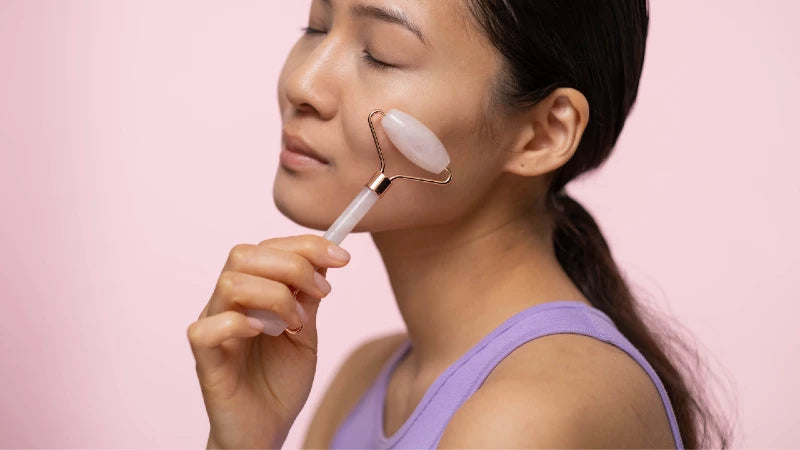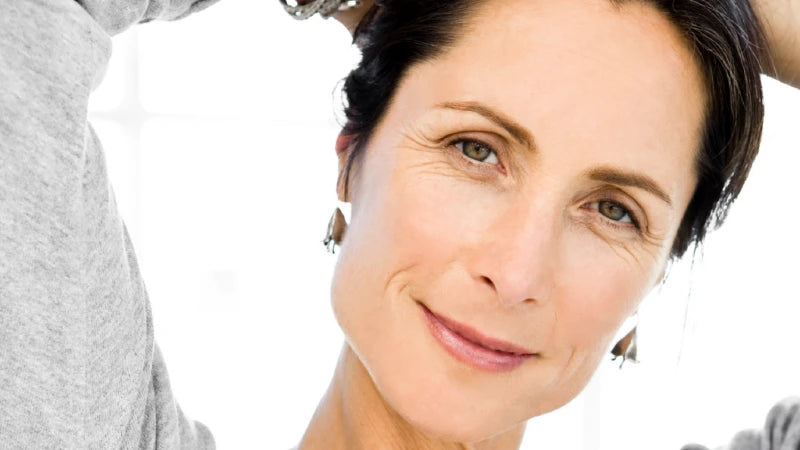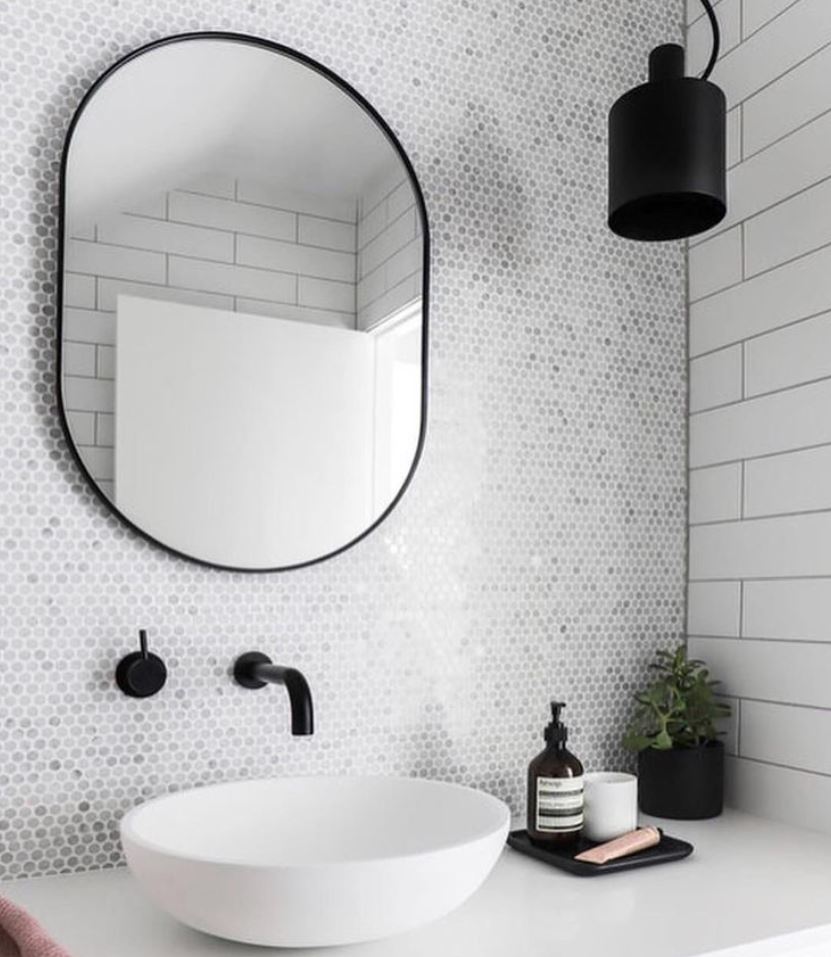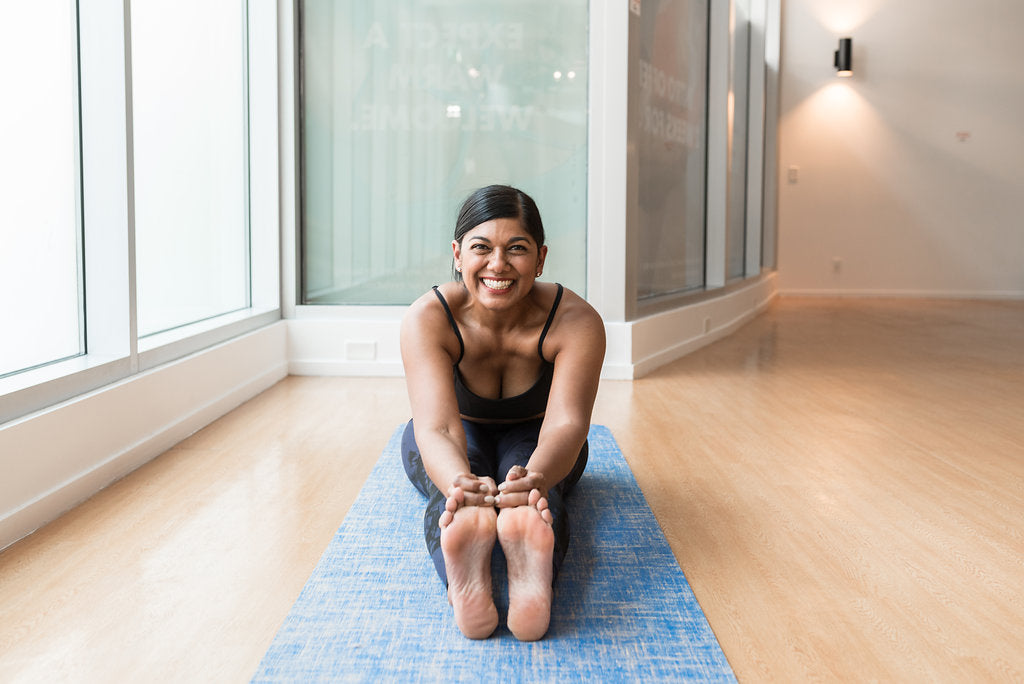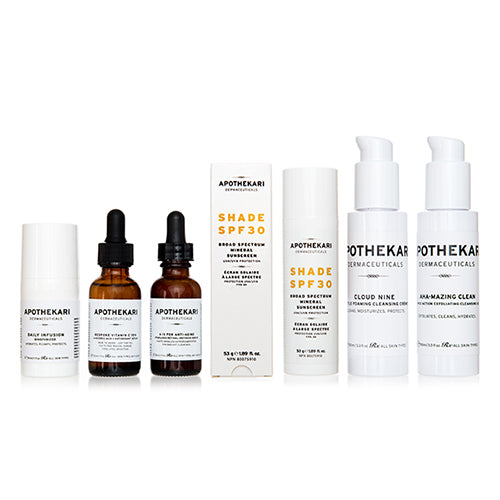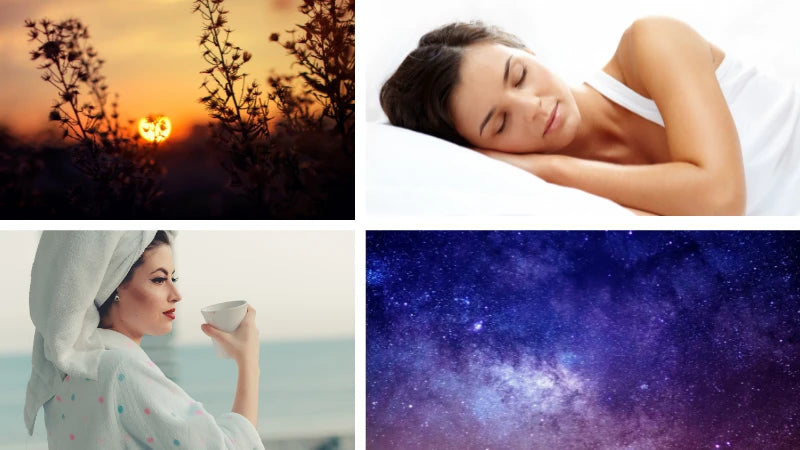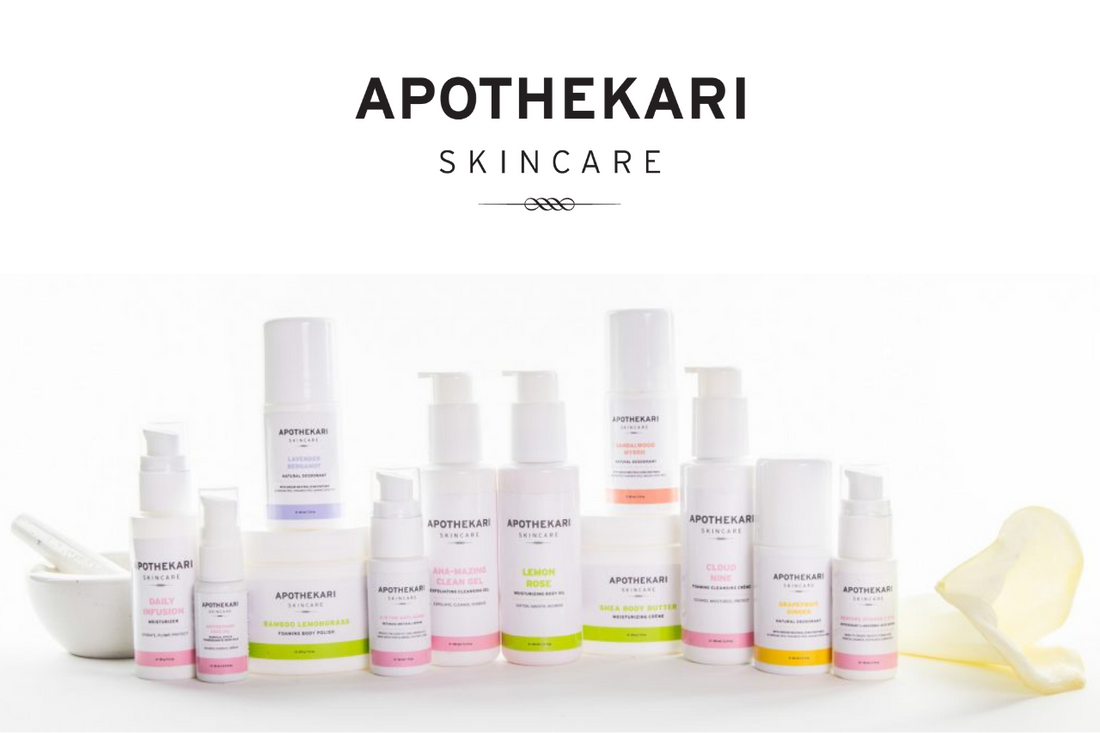Blog
11 Overrated Skincare Products (That You Probably Don't Need)
Just because a cute 20-something is pushing it on social media, it doesn’t mean you need it, or that it’s even good for your skin—here are 11 overrated skincare products that your skin (and your wallet) can do without. SHOP RADIANT SKIN SET Overrated Skincare Products. What Skincare Products Are Necessary? Hype isn’t something that we DON’T do at Apothekari – our line of no fluff, more active ‘stuff’ treatments will transform your skin and provide relief from your skin’s changing needs. Do We Really Need All These Skincare Products? Here are some on the ‘to ditch’ list. 1. At-Home Microneedling Kits Studies have shown microneedling to be beneficial in helping with the absorption of topical skincare treatments like vitamin C and retinoids—when done in a professional setting. At home kits have issues around hygiene and safety. AND, the needling device is likely to be very shallow—so shallow that it won’t be effective. 2. Activated Charcoal Treatments From cleansers, to soaps and shampoos (and underarm detoxes too), charcoal containing products are big sellers these days. While they claim to ‘detox’ and remove dirt and oil, they can only do this on the skin’s surface so the effect is unlikely to be significant. Overrated skincare product for sure – especially don’t buy into charcoal detoxes for your armpits. They are totally unnecessary when making the switch to a natural deodorant like ours. 3. Cellulite Cream They’re usually pricey. More importantly, they do not work. Cellulite creams work no better than a good moisturizer. And, research has shown that physical massage and exercise can help to improve the appearance of cellulite more than any cream can. Keep in mind that cellulite is part of the normal aging process and every woman gets it. It’s impossible to shift it with topical treatments. Does Some Skincare Make Your Skin Worse? Some skincare products and ingredients can actually be harmful to skin, especially if not used correctly. For example: 4. Essential Oils Some essential oils have some great properties—and they smell amazing (love them in my diffuser). But, applied full strength to the face, they can lead to dermatitis, skin irritation, rosacea or psoriasis. While it can be safe to use essential oils on the face, they must be diluted in a carrier oil first. What is unnecessary in skin care routine? Although lots of people use these products, there’s often no need. Here are more overrated skin care products that you can say bye-bye to. 5. Toners We’re not alone in our distaste for useless skincare products and toners fit the bill. Unless they are formulated with ingredients that have a specific function—to hydrate, or minimize acne—they don’t need to take up space on your counter. 6. Stretch Mark Treatments Much like cellulite creams, stretch mark products can’t penetrate deep enough to treat the scarring in the dermis layer of the skin. We’re ranking this up there for worst skincare products. Try a good moisturizer instead. 7. CBD Skin Care Is this not the hottest trend right now? While there’s some research to show that CBD helps with skin inflammation, much more is needed before we can determine whether it fits into the category of overrated skincare products, or ones that actually deliver as promised. These Skin Care Trends Need to Go Away Popular on TikTok and other social media channels, there are some trends that look like a lot of fun—and promise tons of unproven benefits. Now we’re not saying not to do these because for the most part, they’re harmless. But…don’t expect much benefit. Studies have shown that these just don’t work. 8. Face Rollers Is everyone using (or selling) a facial roller these days? They may feel soothing—especially when chilled—but there’s very little science to support the anti-aging claims associated with these overrated skincare products. Made of jade? Or rose quartz? Or amethyst? Doesn’t matter. While they’ll help to reduce swelling or puffiness for the short term, they’re not going to deliver any long term benefits. However, if you enjoy using them, there’s no harm. Just don’t expect the marketing miracles. 9. Face Yoga Face yoga, or even face exercises promises to help lift and firm your skin. Sounds tempting, right? Sadly, there’s very little evidence to suggest that it works. Here’s why. Our face is made up of skin, fat and muscle layered on top of the skull. Beneath the subcutaneous fat are fat pads, which are plump, fat-containing areas that fit together like a jigsaw puzzle to create the volume that gives our face shape. It’s these fat pads that play a role in the fullness of your face; the fuller your face, generally speaking, the younger you look. As we get older, the fat pads begin to thin and become less plump … and as they do this, they also sag. That sagging can leave the face looking hollow as we age. Facial exercises can’t increase the plumpness of the fat pads or make them sag less. They also don’t change the look or feel of the skin itself. No matter how many exercises you do, the muscles under the fat pads won’t help to make your face look fuller. And when it comes to wrinkles and fine lines, there’s no real impact on the support structures (collagen and elastin) in the skin that over time break down and lead to the signs of aging. The good news? Face exercises aren’t harmful, but they’re not a replacement for a consistent skin care routine, including cleansing, sun protection, retinoids, antioxidants and moisturizing. Procedures like fillers, Botox or surgery are far more effective than face exercises if you’re looking for more dramatic results. Check in with your dermatologist if it’s something you’re considering. Do them if they make you feel good, but just don’t expect your skin to look any different. 10. Bee Sting Facials Some studies have shown that bee stings can reduce inflammation. There is the sticky problem though, of bee sting allergies, which can be deadly in susceptible individuals. I think we can safely say that the risks outweigh the benefits for this DANGEROUS and overhyped skincare trend. 11. Snail Mucin A popular K-beauty ingredient, snail mucin comes from snails. It’s reported to have a high concentration of hyaluronic acid, which we know has many skin benefits. But, does it really need to be harvested from a snail when safe and effective options are already available, like the hyaluronic acid—and its relative, sodium hyaluronate—found in our Glow Getter Serum, Daily Infusion Moisturizer and More Than Lip Service Vulvar & Vaginal Moisturizer. What Skincare Products Are Really Necessary? I’ve called out 11 overrated skincare products that are likely going to suck up your time and not give you the results you’re looking for. If you can ignore those 11, which ones are essential to having healthy, glowing skin? Here’s a few things to consider: Know Your Skin Type The key to finding the right products is to identify your skin type – is it dry, oily, normal, combination? What are your concerns? Fine lines, wrinkles, dryness, acne, age spots? Understanding what your skin needs will help you to identify the ingredients and products that are the best fit. Be Consistent Like taking your medicines as instructed, a consistent skin care routine is key to getting results from your skincare products. You need to allow at least 4 to 6 weeks for topical treatments to notice a difference because it takes that long for your skin cells to turn over (renew). Along with regular use, don’t keep adding or eliminating products (unless you experience a reaction) because you’ll never get a grasp on what’s working for you. Be Gentle Too many stripping cleansers or exfoliating too often, can disrupt your skin’s protective barrier, leaving it prone to infection and irritation. Be mindful of the products you’re using. What Are the Only 3 Skincare Products You Need? If I had to choose just 3 skincare products, I know exactly which ones I’d choose: Sunscreen. And I’d use it Every SINGLE DAY. The sun’s UV rays are responsible for more than 80% of skin aging. Find a good broad spectrum sunscreen with a minimum SPF 30 and apply it in the morning. Retinoid. Retinoids like retinaldehyde in our Advanced+ Renewal Serum are one of the best ways to boost the production of collagen and elastin, which form part of our skin’s supporting network. These two proteins decline as we age, leading to fine lines, wrinkles and skin sag so it’s the most effective way to fight back against the most visible signs of aging. There are many other retinoids to choose from so find one that works for your skin to reap its benefits. Antioxidant. Antioxidants like the vitamin C in our Glow Getter Serum help to protect skin against free radicals—unstable molecules that we encounter as a result of sun and pollution exposure—that can lead to skin damage. Of course, life isn’t that simple so most of us need to rely on a few additional products as well. I’d say that a good cleanser—one that helps to remove dirt and make-up without stripping skin is also key. And finally, a moisturizer is something that most women need, especially as they get older and skin becomes drier. Need help choosing a moisturizer? Check out this post: 5 Questions to Ask Before You Choose a Moisturizer. Got anymore overrated skincare products to share? Let us know your worst skincare picks!
Learn moreWhat's the Best Way to Layer Skincare Products?
We’ve written about how to layer skincare products before, and this time we’re going a bit deeper. In this post, learn how to layer skincare products the right way to help maximize the benefits of your topical treatments. Shop Antioxidant Face Oil When Should Oil Be Used in Skincare Routine? So you may get some conflicting advice when it comes to when to apply a face oil. Some advise to apply oil before moisturizer, so that it absorbs right into your skin before you slather on more hydration. Others say to apply it after your moisturizer, so that it can help to lock in the hydrating ingredients. To us, it makes more sense to do the latter – apply it after your moisturizer so that it seals everything in. But, if you read our entire blog post, you’ll know that there really isn’t a perfect answer. Just use the face oil! What is the Order of Skin Care Layers? You’d think that a topic like how to build a skincare routine would be relatively easy. Yet, with all the options available to choose from – creams, serums, toners, essences, oils, etc., – finding the right products for your skin can get complicated. Add in how to use these products to maximize their benefits, well that just adds another level of complexity. If you’ve already got a good skincare routine set up and want to learn the best way to layer skincare products, know that the advice is more a rule of thumb rather than anything set in stone. The most common recommendation is to go from thinnest in texture to heaviest in texture, but even if you get it wrong, nothing bad will happen. Breathe a sigh of relief! Want to get the glowing skin of your dreams? Subscribe to our newsletter list and download our free guide: 5 Tips For Glowing Skin. How Important Are the Steps for a Skincare Routine? In general, it’s recommended that you apply your products in order from thinnest to thickest. The rationale is that this helps to ensure the best possible absorption. However, if you mess things up, and the order gets switched around, it’s unlikely to do much harm. That’s because very few products create a bulletproof layer that nothing can penetrate. So, even if you put your heavy cream on before a hydrating serum, the world won’t end. The absorption of that serum through the cream may happen a lot more slowly and you may not get as much to your skin as you would have if you’d applied it first. Additionally, since the goal of the cream is to help lock in the hydration from the serum, you may lose that benefit as well. The same applies to active treatment serums. Ideally, you’ll want the ingredients as close to your skin as possible (think vitamin C, retinoids etc) so it’s best to apply these first for maximum absorption. Then follow with a cream, lotion or oil. Here’s the Correct Order of Skin Care Products Cleanser. It probably doesn’t come as a surprise that cleansers top the list. Single cleanse, double cleanse, warm water splash (often this is fine for many of us in the morning), it should always be the first step. Toner. We’ve always maintained that toners are optional. Not everyone needs to use them and they’re one of the products that you can leave out of your routine easily. However, toners can be useful to help introduce active ingredients like those found in acne treatments. Serum/Exfoliant. Exfoliants and serums like our Bespoke Vitamin C Serum or A is for Anti-Aging Serum often contain lots of active ingredients like antioxidants, retinoids and peptides so it’s a good idea to apply them as close to clean skin as possible. They’re the products that deliver the most skin benefits so it’s important to ensure their optimal absorption. Moisturizer. Whether you opt for a cream or a lotion, moisturizers help to hydrate and plump skin. They can also help to lock in moisture, preventing dry skin. Eye Cream. Sunscreen (AM)/Face Oil (PM). Sunscreen should always be your last step in the morning before you apply make-up. At night, face oil is the very last thing to put on before you get your zzz’s in. If you want to use a face oil in the morning, put it on before your sunscreen. Remember not to apply too much, especially if you’re layering as your skin can only absorb so much. Let us know if you found this helpful.
Learn moreA 3 Step Skin Care Routine, Especially Through Menopause
When it comes to putting together a skin care routine through menopause, we’ve got you covered! There’s no shortage of advice on the internet about how to put together a skin care plan, regardless of the stage of life you’re at. Ranging from the 10 Step Korean Skin Care Regimen to 7 Step Schedules and whittled down versions as well, the confusion is understandable. Do we really need 10 steps? Can we get away with just one? Shop Aha-Mazing Clean Gel Cleanser Shop Cloud Nine Foaming Cleansing Creme SHOP RADIANT SKIN SET Like you, our time is precious, so anything that involves too many steps isn’t going to cut it. 7 is a stretch and 10 is most definitely too many! We’d love to tell you that you could get away with just one, but alas, that would be a fairy tale and over here, we’re all about keeping things real. While we’ve blogged previously about 4 steps to great skin, we’ve managed to whittle it down to a doable 3 steps. We hope you’ll agree that this is manageable indeed. Why You Need a Skin Care Routine Great skin comes down to two main factors – your DNA PLUS your daily habits. If you won the gene pool lottery, then lucky you. However, it’s important to acknowledge that one can’t rely completely on a genetic advantage when it comes to skin. Conversely, if your genes are against you, all is not lost. A well thought out and regular skin care routine can have a big impact on how your skin ages regardless of your genes. Of course, what constitutes a good routine can differ depending on who you speak to. It’s no wonder that many of us may be left feeling completely confused and unsure about where to begin. Caring for your skin shouldn’t be (and really isn’t) all that complicated. You just need to know the right steps to follow. Through menopause, many women struggle with dryness while others experience acne, even if it’s not something they’ve had to contend with before. You may feel as if you’re reliving your teen years again! Hormonal fluctuations are responsible for many of these skin changes so it may be necessary to revisit your skin care routine and consider changing up the products you’re using. By selecting and using products best suited to your individual needs and ensuring that you follow a well thought out skin care routine, you’ll be well on your way. Let’s get to it. The 3 Steps Everyone Needs Here are the 3 steps everyone needs in their skin care routine: Step 1: Cleanse Step 2: Protect Step 3: Perfect Step 1: Cleanse Cleansing is an important and often neglected part of a skin care routine. Beyond removing make-up, dirt and oils from your face, cleansing helps to provide a clean skin surface, allowing any products that you apply on your skin to be absorbed better. Cleansing also helps to reduce blemishes, redness and irritation, which may be caused by an accumulation of make-up, pollution, dirt and oil. It’s a matter of personal preference whether you choose a one-step or two-step cleansing method. Over here, we go back and forth between the two, depending on the time of year, how our skin feels, how much make-up we’ve applied and also by how lazy we feel! (It’s not a good reason, we agree. But, we also recognize that we’re human). We offer two cleansers at Apothekari. Cloud Nine Foaming Cleansing Crème may be used by all skin types, including individuals with sensitive skin or rosacea. It’s a very gentle cleanser and if you’ve found your skin getting drier and/or more sensitive, it’s a good one to consider. AHA-Mazing Clean Exfoliating Cleanser Gel, provides gentle exfoliation and foaming action with a triple combination of alpha hydroxy acids (AHAs). If you prefer more sudsing action or your skin is on the oilier side or you have acne, then this is the cleanser for you. It may be used by all skin types, but caution should be exercised if your skin is overly sensitive skin or if you have rosacea. Step 2: Protect We’ve all heard the saying, “An ounce of prevention is worth a pound of cure” and this holds true when it comes to your skin. Prevent skin damage by protecting your skin with the right ingredients and your skin will reap the rewards for years after. Two types of ingredients are important to know about when it comes to protecting skin – antioxidants and sunscreens. Antioxidants include ingredients like Vitamins A, C and E, green tea extract, pomegranate seed oil, coenzyme q10, etc. They exert their action by helping to prevent skin damage associated with free radicals, unstable molecules that are formed by exposure to the sun’s ultraviolet (UV) rays and pollution, amongst other things. Free radicals lead to a range of unwanted effects including hyperpigmentation and collagen destruction, associated with lines and sagging. Antioxidants can also help boost the effectiveness of your sunscreen. Sunscreens protect skin by minimizing damage caused by UV rays, which are thought to be responsible for more than 85% of skin aging. Hands down, wearing sunscreen daily is one of the most important things you can do to keep your skin looking its best. You can choose between a chemical or physical blocking sunscreen and the choice is up to you. Well formulated and effective products are available in both categories. We’re big fans of physical sunscreens formulated with zinc oxide because zinc is a very soothing skin ingredient and the only sun filter that delivers protection against the full spectrum of UVA and UVB rays. We know you’re wondering…. is it possible to find a product that combines a sunscreen with antioxidants? Yes, it’s possible to find sunscreens that contain antioxidants and Shade SPF 30 is one. However, most sunscreens don’t contain levels of antioxidants high enough to deliver the maximum protection against free radicals. For the greatest benefit, most experts recommend that you apply both an antioxidant formulation (consider our Bespoke Vitamin C Serum 10 or 15%) and a sunscreen in the morning. Generally, apply the antioxidant first, followed by sunscreen. Step 3: Perfect Once you have the basics of Steps 1 and 2 covered, it’s time to look at your specific skin needs. This will differ depending upon your age, your ethnicity and even where you live (climate, humidity, etc). Whether, you’re worried about wrinkles and fine lines, crows feet, dark circles, hyperpigmentation, dry skin or acne, Step 3 focuses on that. It’s important to find and use treatments that are designed to address your skin’s specific problems. You can choose from a range of products including moisturizers, eye treatments, skin brighteners, acne remedies and various serums. Some treatments, like sunscreens, are designed to be applied during the day. Others, like retinoids (which tend to degrade when exposed to sunlight, are best used at night). Antioxidants, moisturizers, eye creams, skin brighteners etc may be used day and/or night. Whatever you use, give the product a fair chance to make a difference. New skin cells turn over once every four to eight weeks so you need to wait at least that long to determine if the product is working. Regardless of your specific skin needs, one ingredient that’s a must for anyone concerned about healthy and beautiful skin, is a retinoid. Retinoids are derived from Vitamin A and deliver a range of skin benefits including: increasing collagen and elastin production to fight wrinkles, fine lines and skin sag; skin brightening effects, an increase in skin moisture content and a reduction in oil production. They not only help to improve the skin’s appearance, but can also reverse damage caused by the sun. Additionally, retinoids have anti-acne properties, making them a useful addition in the management of acne, which strikes many women through menopause. Apothekari A is for Anti-Aging contains retinaldehyde – a form of retinoid that offers effective yet gentle treatment. It’s well tolerated by most skin types, especially if introduced gradually into your skin care regimen. We know you have lots on your plate; we do too. That’s why we feel that 3 steps in your skin care routine are all you need to achieve healthy and beautiful skin at menopause or at any other phase of your life. Let’s keep things simple and uncomplicated AND with great skin to show for it!
Learn moreHow to Set Skin Care Intentions for 2019
Ever wonder about resetting habits—like skincare intentions—for a New Year? May sound a bit woo, but bare with me, self care is essential to ensure your wellbeing. And what better time to make it a priority than the start of this year? While I’ve abandoned New Year’s Resolutions, which often end up seeming difficult once we reach mid January, these days I’m leaning towards more simple and achievable goals which are easier to stick to and more achievable. For this first blog post of 2019, let’s kick things off with a slightly more mindful post focusing on skin care intentions. And before you think I’ve gone TOTALLY woo woo on you, we’re still going to be discussing skin care but looking at it in a slightly different way. While there are companies that meditate over and bless their products while chanting and playing music before they are packaged and shipped to customers and retailers, I’m not convinced that’s the path for Apothekari. (However, never say never!). Our intention at Apothekari is to cut through the confusion, simplify the process and deliver skin care treatments formulated with ingredients that have scientific proof to back them up. Nevertheless, I recognize that what we put on our skin not only nourishes our skin, but also can play a role in our emotional well-being. The sensory experiences of aroma and touch associated with skin care have a connection to our inner beauty that cannot be discounted. When we approach skin care as part of our self care, we accept it as a way of feeling good about ourselves rather than as a chore or as an indulgence. 3 Skin Care Intentions for 2019 For 2019, I’m focusing on 3 ways to be more mindful when it comes to the care of our skin: 1. Think About What You Eat As the body’s largest organ, our skin reflects what we put into our mouths. I’m not sure about you, but after consuming way too much sugar, an abundance of heavy dinners and alcoholic cocktails, my skin often reflects the culinary abundance by the time the New Year rolls around. My body craves warm bowls of nourishing soups, crisp vegetables and leaner fare. I find that a structured eating plan makes perfect sense for the New Year. I’ve embarked on the Whole30 Challenge in past years, but this year I’m focusing on being more mindful about what I eat and appreciating the impact that this has on the health of my skin and overall wellness. Whatever works for you – a juice cleanse, calorie counting – it’s about paying attention to how your body reacts to your food choices. 2. Get Moving In a previous post I’ve discussed a study that showed that it’s not just our hearts that benefit from exercise. Researchers have demonstrated that premature aging in nearly every organ in the body, including the skin, was completely prevented in mice that ran on a treadmill three times a week for five months. My ‘thing’ is hot yoga, a practice that I took up nearly six years ago and which has helped me to build strength and flexibility and also to find calm. “Exercise truly is the fountain of youth.” 3. Stick to a Routine Despite how tired you may feel when you fall into bed, establishing and STICKING to a skin care routine is paramount to success. As with most things in life, consistent action produces results – one can’t expect to try a product just once or twice and expect to see a dramatic transformation. You’ll achieve far more benefit from a long term plan than you will with a week-long “miracle treatment.” It’s not just topical products that have an effect on your skin’s health, it’s about investing beyond that in a nurturing and intentional way. This year, by telling and showing your skin (and the rest of your body) that you care via your actions, you may find your skin responding in ways you didn’t expect. And if that’s a bit woo-woo, well then so be it!
Learn moreAre You Ready for the Skin Care Diet?
If even the thought of the word ‘diet’ makes you cringe, you’ll be happy to know that the skin care diet doesn’t focus on what you put in your mouth. Don’t worry about cutting back on gluten, sugar or alcohol, the skin care diet making the waves right now, focuses on what you put on your skin. Thought to be a push-back against one of the latest trends to hit the beauty world, “The 10 Step Korean Skin Care Routine”, the skin care diet emphasizes how to minimize the steps in your skin care routine. As someone who’s a minimalist when it comes to skin care, I can’t even begin to imagine the number of products and the amount of time it would take to implement a 10 step skin care routine on a regular basis. While the end goal of the skin care diet is to decrease irritation, I see how this would not only free up significant amounts of time PLUS leave more money to spend on other things. It’s not surprising that skin bombarded with lots of actives on a daily basis may struggle. This can become extremely problematic if one loads up on products containing retinoids, alpha hydroxy acids and/or low pH ingredients (like Vitamin C) all in one go. Products that are either incompatible or harsh can result in the development of redness, sensitivity and irritation. More serious cases may result in contact dermatitis, a condition that presents with large, burning, and itchy rashes that can take anywhere from several days to weeks to heal. Why a Skin Care Diet? The word diet is involved because it’s a way of eliminating products that may be harming your skin or which may be unnecessary. Individuals are advised to cut back to the basics – a cleanser, moisturizer and a sunscreen, products which typically tend to be free of potentially harsh active ingredients. This regimen may be compared to an elimination diet that is often recommended to help individuals with suspected food allergies. You remove most things from your skin care regimen and then gradually reintroduce those that you consider essential, one at a time. This process allows you to determine how your skin tolerates and responds to each treatment and helps you make certain that you aren’t introducing ones that are problematic for your skin. When it comes to your skin, more steps and products are not necessarily better and it’s never a bad idea to simplify your skin care regimen. At Apothekari, we recommend 4 steps to great skin – Cleanse, Prevent, Protect and Treat (for individual skin concerns). It’s possible to get away with just 3 products and then add one or two for specific issues. I don’t know about you, but I’ll take 3 or 4 steps over 10 any day!
Learn moreMorning Skin Care Vs Evening
Your skin is exposed to UV rays, pollution, dirt and makeup. You may spend a good chunk of time talking on your cell phone, exposing your face to bacteria. For this reason, a morning skin care routine should be protective, helping to defend your skin against damage. At night, once you get rid of the dirt and makeup on your face, the scariest thing you’ll have to contend with is your pillowcase so make sure to change it regularly. This is the time when your skin (and your body) goes to work in resting, repairing and prepping for the next day. Shop All Apothekari Is It Better to Do Skin Care In the Morning or Night? To support your skin during both periods, you need to look after your skin both in the morning and night. The regimens are different but they don’t need to be complicated. In this post we show you how. Why Is Skin Care Better at Night? (it’s not…) At night, focus on cleansing and nourishing your skin. Choose products, that can help your skin to repair itself and even help slow down the aging process. Here’s what to do: Cleanse. Choose a gentle formulation that won’t strip away skin’s natural oils. Depending on your skin type, opt for one that is foaming – AHA-Mazing Clean Cleansing Gel – or creamier, like our Cloud Nine Foaming Cleansing Crème. If you enjoy using cleansing oils and balms, they are an effective way to help remove make-up and can be incorporated as part of a double cleanse method by following with a foaming cleanser after. Prevent. Ingredients including peptides, retinoids and antioxidants help to boost collagen and elastin production, tell your skin cells to behave normally and combat inflammation. We consider retinoids essential to healthy and youthful skin, but they are light sensitive so should be used at night. Apothekari A is for Anti-Aging contains retinaldehyde and niacinamide to boost collagen production, brighten skin tone and reduce the appearance of wrinkles and fine lines. Treat/Correct. Whether a serum, cream or lotion, this is a good time to apply treatments that can help to fix issues unique to your skin: For extra hydration, apply a moisturizer like our Daily Infusion Moisturizer, which hydrates and plumps skin. For hyperpigmentation, apply skin lightening agents including Vitamin C, niacinamide, retinoids, etc. Yes, you can use our Bespoke Vitamin C serum at night too! For eye care, seek out formulations to help combat puffiness, dark circles and crow’s feet. Consider Apothekari Firming Eye Gel, featuring Vitamin C. For wrinkles and fine lines, the retinoid or peptide formulation used in step 2, for prevention, has you covered. For sun damage, a combination of skin lighteners/brighteners and retinoids can help to reverse the damage. For oily skin, apply exfoliating toners or serums to help manage sebum production and reduce blemishes. Is Morning Skin Care Necessary? (um, yes…) Your morning skin care routine differs from that of your evening one in a few different ways: Cleanse. (Optional) In the morning, we consider this step optional, especially if your skin is dry to normal. It’s one step that I skip and boils down to a matter of personal preference. To cleanse or not to cleanse – this one’s up to you. Protect. The sun’s UV rays are responsible for more than 85% of skin aging. For this reason, the most important skin care product you’ll ever need is sunscreen. Use it daily, year round and you’ll reap the rewards. Watch out for our Shade SPF 30 coming soon! Prevent. It’s always good to try and prevent bad things before they happen so this step focuses on just that. Antioxidants, including Vitamins A, C and E, ferulic acid, pomegranate seed oil, astaxanthin and green tea are backed by sound science to support their efficacy preventing skin damage associated with free radicals and UV rays. Antioxidants can also boost the effectiveness of your sunscreen. Apply antioxidants in the morning to battle the daily assault of pollution and ultraviolet rays and at night to help boost collagen production and fight against factors that age skin.Apothekari Bespoke Vitamin C 10% or 15% are our made to order high potency Vitamin C serums containing a range of antioxidants including L-ascorbic acid, ferulic acid, astaxanthin, pomegranate seed oil and green tea extract. It also features hyaluronic acid and propanediol to moisturize. Treat/Correct. As with your PM routine, your morning routine should incorporate treatments and ingredients that will help manage your particular skin issues. Revisit those and include them if you feel necessary. Not too complicated, I hope! Does your morning skin care routine differ from the one at night?
Learn more4 Steps to Great Skin
The truth? Beautiful skin needn’t be complicated or take lots of time. Years of researching products and ingredients have allowed me to distil the process into 4 simple steps – Cleanse, Prevent, Protect and Treat. Shop All Apothekari While the products may differ depending on your skin type and specific needs, these 4 steps will help keep your skin looking young and healthy, whatever your age. Step 1: Cleanse (AM/PM) Cleansing helps keep your face free from make-up, dirt and oils, which may lead to blemishes, redness or irritation. It also provides a clean surface to better absorb active ingredients and a smooth base for make-up. Depending on preference, you may opt for one step (just a cleanser) or two-step cleansing (cleansing oil/make-up remover followed by a cleanser). Choose from Apothekari Cloud Nine Foaming Cleansing Crème, suitable for all skin types, including sensitive skin and individuals with rosacea or Apothekari AHA-Mazing Clean Exfoliating Cleanser Gel, an exfoliating cleanser featuring sugar cane extract and a triple combination of alpha hydroxy acids (AHAs) to help smooth fine lines and wrinkles, gently exfoliate clogged pores and promote cellular renewal. Designed for all skin types, but caution if you are overly sensitive or have rosacea. Optional: Toners. Toners are a great way to great way to deliver targeted actives for acne, rosacea or dry skin. For the rest of us, their use is a matter of personal preference. Step 2: Prevent (AM/PM) Prevent skin damage and your skin will be thankful for many years after. Antioxidants such as Vitamins A, C and E, ferulic acid, pomegranate seed oil, astaxanthin and green tea are backed by sound science to support their efficacy in aiding the prevention of skin damage associated with free radicals and UV rays. Antioxidants can also boost the effectiveness of your sunscreen. Apply antioxidants in the morning to battle the daily assault of pollution and ultraviolet rays and at night to help boost collagen production and fight against factors that age skin. Apothekari Bespoke Vitamin C 10% or 15% are our made to order high potency Vitamin C serums containing a range of antioxidants including L-ascorbic acid, ferulic acid, phloretin, astaxanthin, lycopene and pomegranate seed oil. It also features hyaluronic acid and glycerin to moisturize. Step 3: Protect (AM) You may not know it, but the sun’s UV rays are responsible for more than 85% of skin aging. For this reason, the most important skin care product you’ll ever need is sunscreen. Use it daily, year round and you’ll reap the rewards. Sunscreen filters can be divided into two main types – chemical and physical. Chemical filters interact with the skin’s top layer to absorb and render UV rays harmless. Physical filters sit on top of the skin to deflect UV rays. Sunscreens may contain either one or a combination of the two. While both types are effective, my preference is for those that contain physical filters. Why not opt for a chemical free version if it offers the same benefits? Zinc oxide and titanium dioxide comprise the two physical blocking filters. Zinc oxide covers the full range of the UV spectrum (both the longer UVA (aging) and shorter UVB (burning) rays. Titanium dioxide doesn’t block all UVA rays so I’d steer clear of sunscreens formulated with only titanium dioxide as a sun filter. Studies have shown zinc oxide to safe, stable upon sun exposure and effective. Our Apothekari Shade SPF 30 delivers broad spectrum, UVA/UVB blocking protection in a non-whitening formulation containing additional free radical fighting benefits. Step 4: Treat/Correct (AM and/or PM) Once you have the basics of the above 3 steps covered, your skin may need a bit of extra help. Depending on your individual needs, Step 4 delivers just that. One ingredient that is a must for anyone concerned about youthful skin, is a retinoid. Derivatives of Vitamin A, retinoids provide a range of benefits to skin including: a reduction in the appearance of wrinkles and fine lines; an increase in the production of collagen and elastin; an increase in skin cell turnover; skin brightening; a reduction in the appearance of blemishes and hyperpigmentation; an increase in skin moisture content; protection against UV damage and; a reduction in oil production. It may sound too good to be true, but it’s not! A is for Anti-Aging Retinal Serum contains stabilized retinaldehyde – an effective yet gentle treatment. If you have had problems incorporating a retinoid into your regimen before, try A is for Anti-Aging. Many of our customers unable to use other retinoids are able to tolerate it well. *Caution with rosacea or sensitive skin. If you have dry skin, incorporate a moisturizer like our Daily Infusion Moisturizer – apply day and/or night as required. Oily Skin, Dry Skin, Rosacea, Hyperpigmentation, Wrinkles/Fine Lines and Eye Concerns require specific protocols. Watch the blog for future posts as we discuss those in more detail. Here’s to beautiful skin!
Learn more

